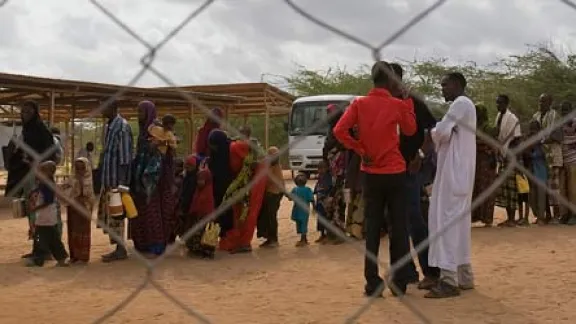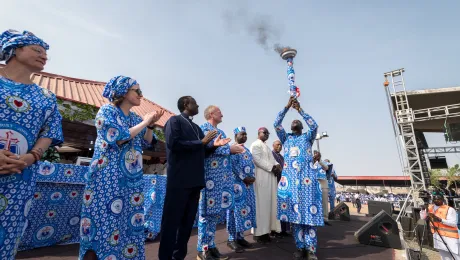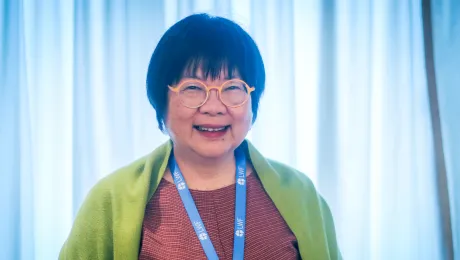
New arrivals from Somalia wait to be registered at Dadaab during the peak influx in August 2011. © LWR/Jonathan Ernst
Security under Review to Ensure Safety for Staff and Refugee Community
Already heightened security details at the Dadaab refugee camps in northeastern Kenya are being reviewed following the fatal shootings of two leaders of the community peace and security teams (CPST) in less than a week. Organized by the refugees themselves, the CPST help to keep the camps safe for the more than 463,000 men, women and children mainly from Somalia.
According to information from camp management, Ahamed Mahmoud Mohamed, CPST chairperson for the Hagadera refugee camp, was shot dead on 29 December by two unknown individuals near his house as he returned home in the evening. The suspects are said to have disappeared in a waiting vehicle. On 1 January one of the CPST section leaders at the Ifo camp was fatally shot. Local police are pursuing the cases, but no arrests have been made so far.
At the time of his death, Mohamed had been serving as Hagadera CPST chairperson for three years. Staff working for agencies at the United Nations High Commissioner for Refugees (UNHCR) camps, the Kenyan authorities and the refugee community described him as a very respected leader.
"Our thoughts and prayers are with the families of the CPST leaders at this time," said Lennart Hernander, representative of The Lutheran World Federation (LWF) for the Kenya-Djibouti program, which is responsible for housing and security at the Dadaab camps.
He emphasized the effective role that the CPST play in keeping the peace in the world's largest refugee camp as "community police" teams of refugee volunteers recruited by the refugee leaders with training support from the LWF.
The teams patrol the camps day and night, and are called in to solve various problems ranging from queue jumping to attempted rape, from theft to encroachment on allocated plots, Hernander said. "They are a vitally important part of the LWF's work and operation in Dadaab, especially in providing protection for vulnerable people like young women," he added.
He said that following the latest incidents, all LWF camp-based staff have been relocated to the main compound in Dadaab. Security details for staff refugee incentive workers and CPST members in all the six camps are being reviewed in close cooperation with the UNHCR and local authorities.
In November, the LWF stated it would scale down its operations inside the Dadaab camps following a high security alert that hampers humanitarian response. A military operation launched mid-October by Kenyan forces against the Al-Shabaab militant group inside Somalia seeks to secure Kenya's borders. Additional Kenyan police have been deployed to the region.
The influx of refugees into Dadaab has dropped significantly from the more 1,000 per day in July to around 30-50 daily since official registration was stopped in November. LWF staff presence there has been reduced by nearly 60 percent to a workforce of 55 persons providing the essential services of camp management, security, information, planning and social work.
"The LWF remains committed to its ongoing work in Dadaab. We recognize and respect the important role the CPST play in engaging the refugee community to actively contribute and participate in dealing with their own difficult situation. The LWF will take the necessary measures needed to keep both refugees and all staff safe and secure in the camps, including support to the CPST," said Rev. Eberhard Hitzler, director of the Department for World Service, the LWF's relief and development arm.
The Dadaab refugee camp was set up in 1991 to accommodate an estimated 90,000 refugees. Hundreds of thousands fleeing famine and conflict in Somalia have sought refuge there over the years, with the influx reaching a peak between July and August 2011.
(622 words)


